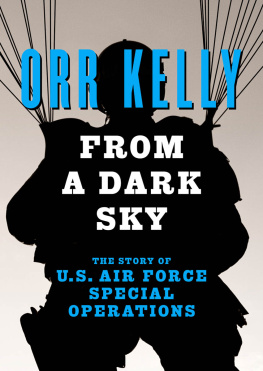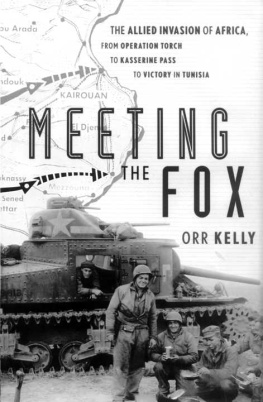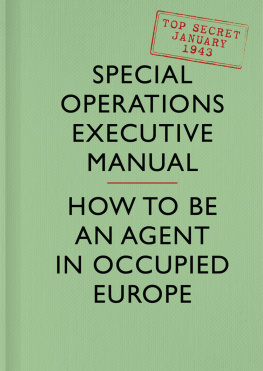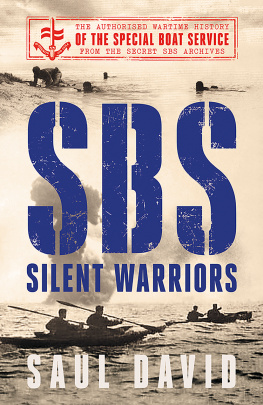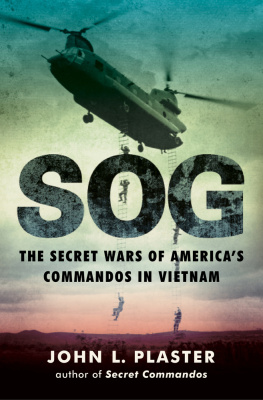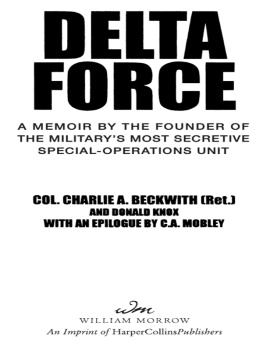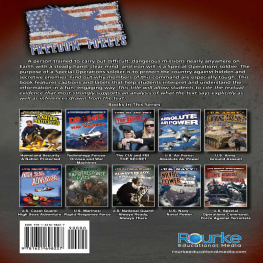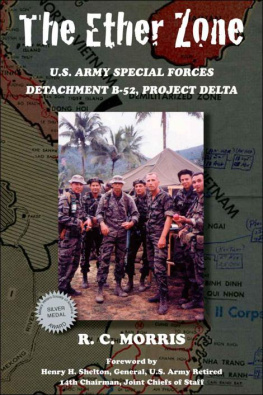From a Dark Sky
The Story of U. S. Air Force Special Operations
Orr Kelly

For my brother, Jack Kelly
CONTENTS
Preface
Special operations has ranged in size, over the years, from a small part of the bigger Air Force down to a virtually invisible part. But whether they called themselves Air Commandos or Carpetbaggers, Ravens or Butterflies, Nimrods or Spectres, whenever the going got tough, the special operators made their mark. They were the ones called on to do the unusual jobsoften the impossible jobsthat other Air Force units couldnt, or wouldnt, do, whether it involved flying low, slow, and alone in the dark behind enemy lines or introducing unique new weapons such as the fixed-wing gunship or the Pave Low helicopter.
Two things have struck me most in my research on the half-century history of Air Force special operations. One is how remarkably rich and varied that history has been. The other is how the history of special operations has so often been the story, not of groups or wings or squadrons, but of resourceful, innovative, and often strikingly courageous individuals or very small groups of individuals.
Almost always the story quickly focuses down to the exploits of individualswhether it is the extraordinary adventure of John Carney, alone in the dark Iranian desert preparing a landing site for the attempt to rescue American hostages from Teheran in 1980, or Bob Leonik, thinking of himself as an orchestra conductor as he piloted his helicopter and its small crew into Iraq to begin the Desert Storm offensive a decade later, or Ron Terry, bucking the opposition of the brass and using his own credit card to get the fixed-wing gunship into combat.
Unfortunately, this volume can give credit to only a small number of the many men who have made their mark on special operations over the years. I have chosen to highlight the accomplishments of a few to give the reader a sense of the accomplishments of the many who have also served with distinction.
Because their units are small and their assignments special and often very secret, the special operators have never fit comfortably into the bureaucratic structure of the big Air Force. Traditionally, a career in special operations has been one of the surest ways to avoid becoming a general. That tradition may be changing now, and perhaps that change is to be regretted. The history of special operations offers plentiful evidence that those who are best at this special work are often those who dont aspire to become generals and are genuinely surprised on those rare occasions when they find stars on their shoulders.
Most military histories focus on the actions of the generals because they are the ones who make the large decisions and have the most influence on the course of events. The reader will find this history different. Much of what special operators do is done by enlisted men and relatively junior officers, and this is their story.
The reader may be especially intrigued to read of the little-known combat controllers, or special tactics teams, as they are now called. Trained to swim like a Navy SEAL, fight like a member of the Armys elite Delta Force, and parachute with the Rangers, they also have the special skill to set up and run a busy airfield in the dark behind enemy lines. Recently, they have taken on the added responsibility of caring for the wounded and injured during airfield assault operations. Most of the combat controllers and all of the pararescuemen, or PJs, as they are called, are enlisted men.
Probably to the discomfort of many of those mentioned in this book, I have followed the Air Force practice of using the words air commando as a kind of convenient blanket term for all of special operations. But many men identify themselves with their own specialty rather than the broader blanket term. A Carpetbagger considers himself a Carpetbagger, a Raven considers himself a Raven, and a Nimrod prides himself on being a Nimrod.
The Carpetbaggers and the Ravens have their own separate reunions. The Nimrods attend the annual air commando reunion but tend to remain off by themselves. And even the Air Commandos of World War II, who gave their name to the concept, segregate themselves into two groupsthe 1st Air Commandos, who served in Burma, and the 2d and 3d Air Commandos, who came later and served as more traditional military units in the Pacific.
I have tried to keep the use of military designations and acronyms from being any more burdensome to the reader than it has to be, inserting explanationsor translationsof military terminology wherever necessary.
Some confusion is unavoidable, however. A prime example is the Douglas Invader aircraft. Known in World War II as the A-26, it was called the B-26 during the late 1940s and the 1950s, only to revert to the A-26 designation during the war in Southeast Asia. It was always basically the same planenot to be confused, of course, with the World War IIera Martin B-26 Marauder. I have used the designation current at the time. There are other terms, unfortunately, which have dual meanings. The acronym CAS, for example, stood for Controlled American Sourcea term for Central Intelligence Agency operations in Laosbut also means close air support. For the reader still in doubt despite context and explanatory notes, I have included an extensive glossary.
For help in research for this volume, I owe a debt of gratitude to a number of people.
Mrs. Yvonne Kincaid, librarian at the Air Force history center at Bolling Air Force Base in Washington, D.C., guided me through the voluminous microfilm and paper records on file there. My research there was supplemented by a visit to the Air Force Historical Research Agency library at Maxwell Air Force Base, Montgomery, Alabama, where the originals of many of the records duplicated at Bolling, plus additional records, are available. Essie Gay Roberts was most helpful during my visit to Maxwell.
Herb Mason and his assistant, Clay McCutchan, at the Air Force Special Operations Command history office at Hurlburt Field, Florida, at first apologized for having so little materialand then began pulling detailed reports off their shelves going back to World War II. Of particular value were reports and original documents saved and collected by Col. Robert Fish, a commander of the Carpetbaggers in Europe during World War II. Fish and his neighbor, Col. J. W. Bradbury, USAF retired, who served with the Carpetbaggers and has collected a good deal of information about their contacts with the resistance force, were particularly helpful during interviews in San Antonio, Texas, where they now live.
Another invaluable source of anecdotal information was the past issues of the Air Commando Association Newsletter, in which many special operators had told their personal stories.
For my account of the operations of the Air Resupply and Communications Service in the 1950s I am indebted to Carl H. Bernhardt, Jr., of Cheshire, Connecticut, who sent me a complete file of the Air Resupply and Communications Associations newsletter on a computer diskette.
Air Force public affairs officers at Hurlburt and Kirtland Air Force Base in Albuquerque, New Mexico, were particularly helpful in setting up interviews. At Hurlburt, I had the help of Shirley Sikes, Lt. Sean McKenna, and Sandy Henry, who keep their office running. At Kirtland, a week of interviews was ably managed by Senior Airman Jim Fisher, whose performance far exceeded his pay grade.
For an insight into what it is like to do the kind of flying special operations crews routinely do, I am indebted to Lt. Col. Michael E. Homan, Maj. Robert Abernathy, and Capt. Ed Meyer and their crews. With them, in a series of flights, I spent more than nine hours in the air in the Pave Low helicopter, flying through the New Mexico mountains in the dark at two hundred feet, refueling from an HC-130 Combat Shadow tankeragain in the darkand flying formation and landing at rough landing zones in the mountains with the aid of night-vision goggles.
Next page
